1. What is GDF-8?
GDF-8, also known as myostatin, is a member of the transforming growth factor-beta (TGF-β) family of proteins. It is a negative regulator of muscle growth, meaning it inhibits muscle development and hypertrophy. GDF-8 is primarily produced in skeletal muscle and acts to limit the growth and differentiation of muscle cells. Myostatin’s role as a muscle growth inhibitor has made it a target for research in muscle-wasting diseases, such as muscular dystrophy, and for enhancing muscle growth in healthy individuals.
2. GDF-8 Structure
Molecular Formula:C339H510N90O102S6
Molecular Weight:25kDa
CAS Number:271597-12-7
3. GDF-8 Research
GDF-8, or Growth Differentiation Factor 8, is a secreted signaling protein and a member of the TGF-β superfamily, primarily expressed in skeletal muscle cells. First identified in 1997 by Dr. Se-Jin Lee, GDF-8 plays a critical role as a negative regulator of skeletal muscle growth. Genetic deletion or pharmacologic inhibition of GDF-8 leads to muscle hypertrophy, making it a central target for therapeutic development in muscular dystrophies, cachexia, and age-related sarcopenia.
【1】Mechanism of Action
GDF-8 is synthesized as a precursor protein, cleaved into an active mature dimer that binds to activin type IIB receptors (ActRIIB).
Binding activates Smad2/3 intracellular signaling, which inhibits satellite cell proliferation and downregulates myogenic transcription factors like MyoD and myogenin.
Acts in autocrine and paracrine fashion to suppress muscle fiber size and number.
【2】Key Research Findings
Myostatin Knockout Models: Mice lacking GDF-8 exhibit a 2- to 3-fold increase in muscle mass with no tumorigenesis or cardiac hypertrophy 【https://www.nature.com/articles/387083a0】.
Antibody Therapies: Administration of neutralizing antibodies against GDF-8 in adult animals led to reversible muscle growth, supporting potential for clinical applications in humans (PNAS).
Circulating Myostatin & Aging: Studies show elevated GDF-8 levels correlate with muscle loss, frailty, and physical decline in elderly individuals【https://pubmed.ncbi.nlm.nih.gov/28148667/】.
【3】Expert Insight
Dr. Se-Jin Lee: “GDF-8 represents one of the most powerful physiological inhibitors of muscle mass ever discovered.”
A 2020 review in Nature Reviews Endocrinology calls GDF-8 “a gatekeeper of muscular integrity and a promising target in wasting syndromes.”
✅ Why Consider GDF-8 (Myostatin Inhibition)?
💪 Direct suppression of muscle atrophy pathways
🧬 Validated target in both animal models and human biomarker studies
⚙️ Central role in age-related sarcopenia, muscular dystrophy, and cachexia
🧪 Therapeutic modulation possible via antibodies, gene silencing, or peptide inhibitors
🧠 Key regulator of satellite cell activity and muscular regeneration
4. Future GDF-8 Research
A. Targeted Therapies & Advanced Inhibitors
Monoclonal antibodies (e.g., Stamulumab/ACE-031) continue to be investigated in clinical trials for Duchenne Muscular Dystrophy (DMD), SMA, and inflammatory myopathies.
Soluble receptor decoys (ActRIIB-Fc) are under evaluation to selectively sequester circulating myostatin without triggering off-target effects seen in broader TGF-β inhibitors.
Small molecule inhibitors, including GDF-8-binding peptides and RNAi therapies, offer non-immunogenic and potentially oral alternatives for chronic dosing.
B. Regenerative Medicine and Performance Recovery
Investigating controlled GDF-8 suppression in post-surgical rehabilitation or athletic injuries to enhance muscle reconstitution.
Research into combination therapies pairing GDF-8 inhibition with IGF-1, Follistatin, or GH secretagogues to maximize anabolic response while minimizing immune tolerance.
C. Systemic Roles Beyond Muscle
Evidence now suggests GDF-8 also impacts metabolism, fat distribution, and bone density:
Mice lacking GDF-8 show lower fat mass and improved insulin sensitivity (Endocrinology, 2008).
GDF-8 overexpression has been linked to bone mineral loss and reduced osteoblast activity.
Future research will assess GDF-8’s relevance in type 2 diabetes, obesity, and osteoporosis, positioning it as a multi-axis regulator.
D. Gene Editing and CRISPR Models
Development of CRISPR-edited muscle stem cells lacking GDF-8 to study autonomous regeneration in dystrophic muscle environments.
Use of AAV-CRISPR tools to permanently suppress GDF-8 in vivo with tissue-specificity and minimal off-target activity.
5. Application Area
💪 Muscle Growth & Rehabilitation
Therapeutic GDF-8 inhibition has applications in:
Duchenne and Becker muscular dystrophy
Age-related sarcopenia
Cancer cachexia and chronic illness–related atrophy
Post-operative recovery and orthopedic rehab
🧬 Metabolic Disorders
Insulin resistance and type 2 diabetes interventions, given myostatin’s role in glucose uptake and adipose tissue signaling
【https://pubmed.ncbi.nlm.nih.gov/16868079/】
🦴 Bone and Connective Tissue
Reducing GDF-8 may support bone mass retention, osteoblast activation, and joint stability
🧠 Longevity & Frailty Research
Biomarker for frailty indices in geriatric cohorts
Investigational use in longevity clinics aiming to maintain lean mass and mobility
🏋️♂️ Sports & Performance
Performance enhancement in strength sports remains controversial; however, controlled short-term suppression is being evaluated for injury recovery and rehab settings
✅ Summary
GDF-8 is a central governor of muscle mass with:
✔️ Strong preclinical and early clinical evidence as a therapeutic target
✔️ Wide application potential across muscle, metabolic, skeletal, and aging-related domains
✔️ Rapid innovation in antibody, gene, and peptide-based inhibition strategies
✔️ A key node for combination therapies with IGF-1, Follistatin, and metabolic regulators
ALL ARTICLES AND PRODUCT INFORMATION PROVIDED ON THIS WEBSITE ARE FOR INFORMATONAL AND EDUCATIONAL PURPOSES ONLY.
The products offered on this website are furnished for in-vitro studies only. In-vitro studies(Latin: in glass) are performed outside of the body. These products are not medicines or drugs and have not been approved by the FDA to prevent, treat or cure any medical condition, ailment or disease. Bodily introduction of any kind into humans or animals is strictly forbidden by law.

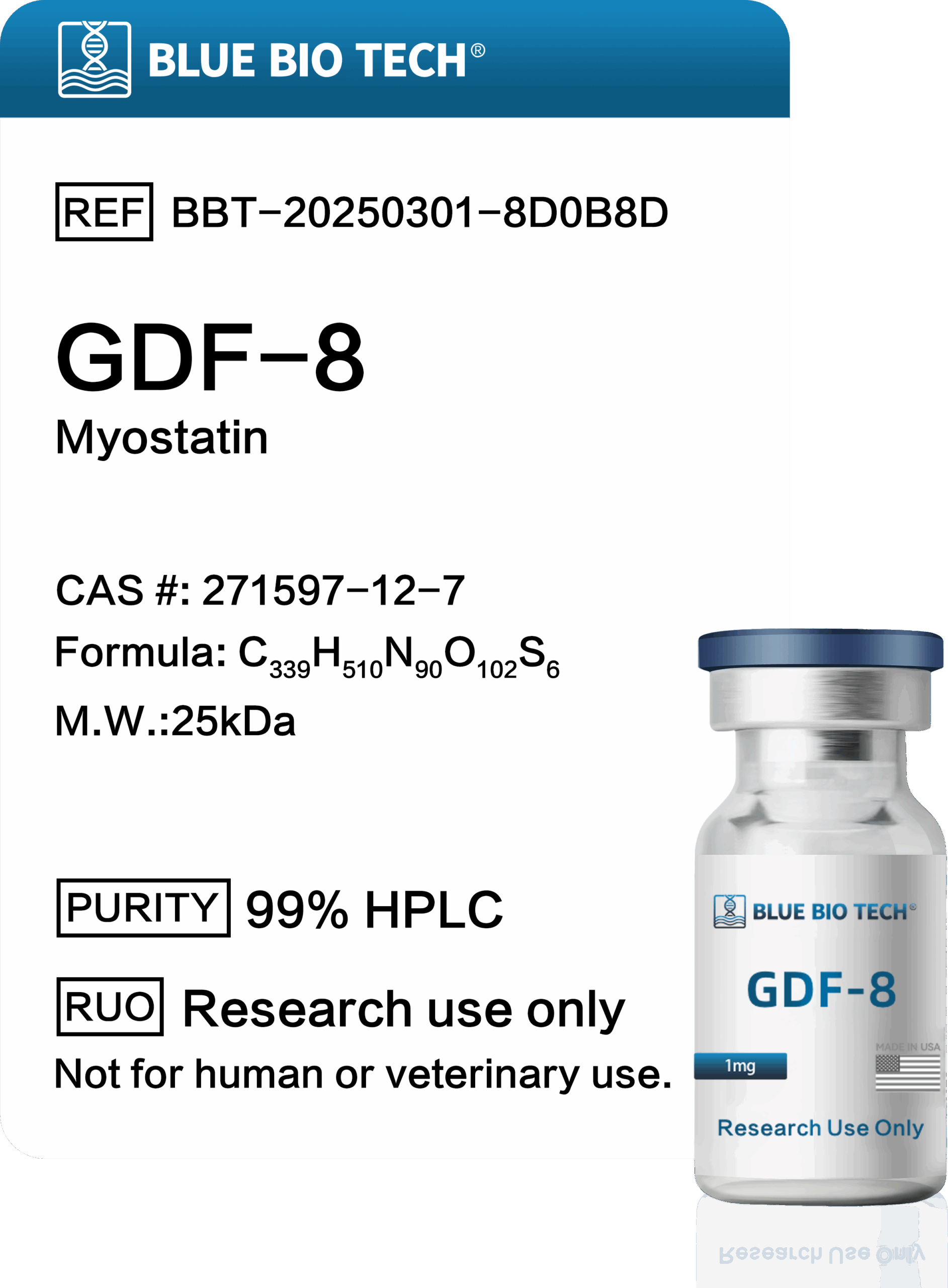
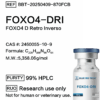
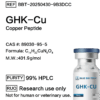
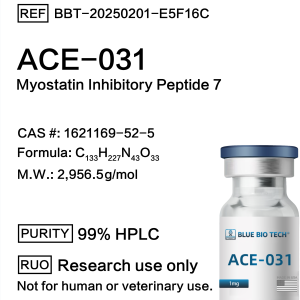
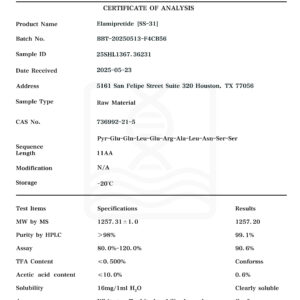
![Elamipretide [SS-31] 10mg](https://bluebiotech.us/wp-content/uploads/2025/08/Elamipretide-SS-31-300x300.png)
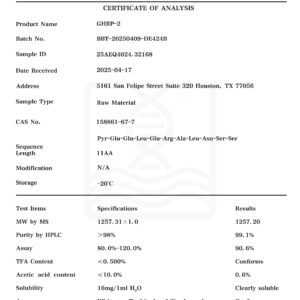
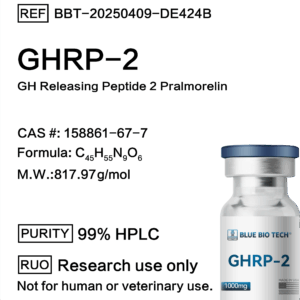
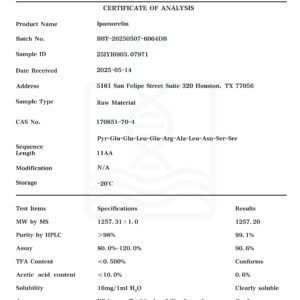
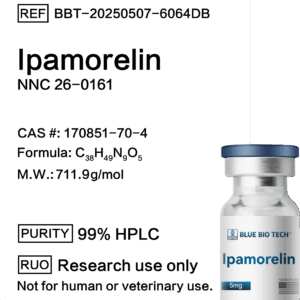
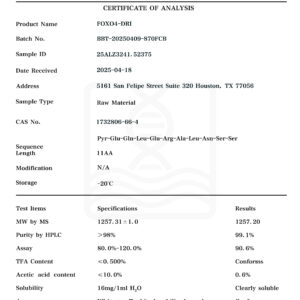
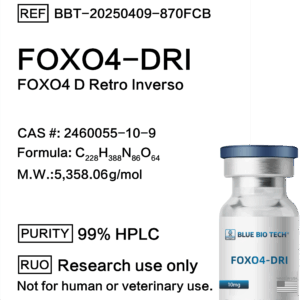
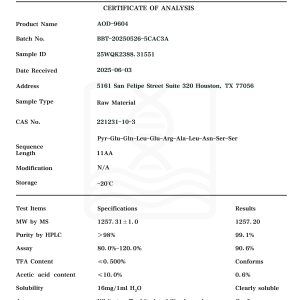
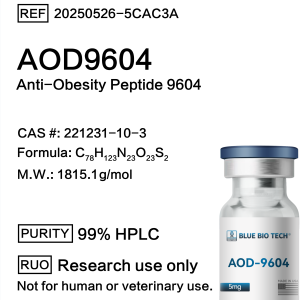
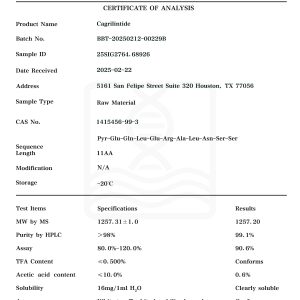
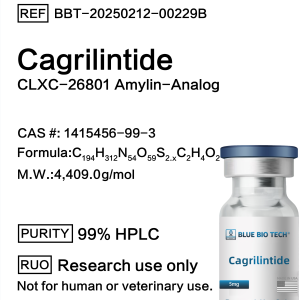
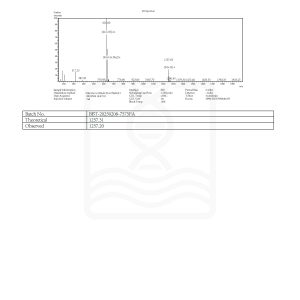
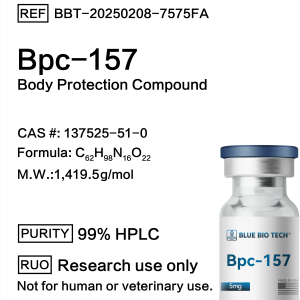

-300x300.png)
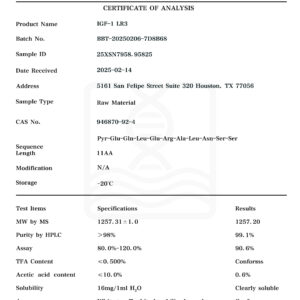
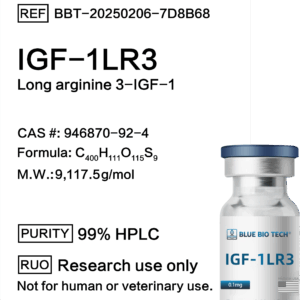

Reviews
There are no reviews yet.